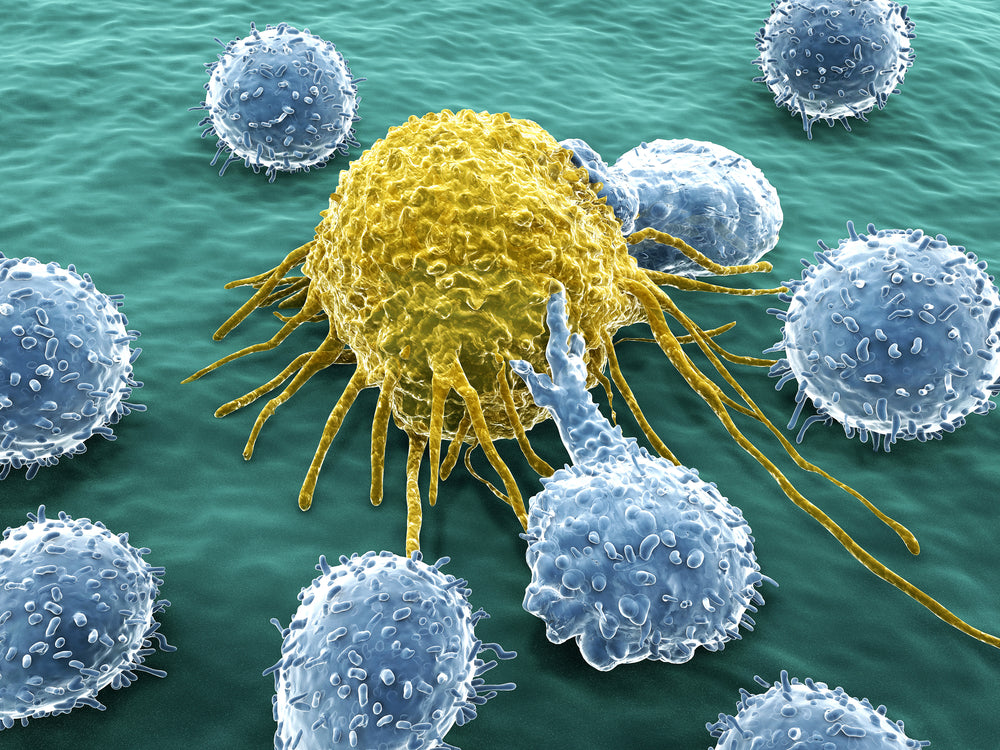The Hallmarks of Cancer
Bulletpoints:
- Cancer development is a complex process and the “hallmarks of cancer” help us understand specific changes in normal cells that must occur for cancer to develop.
- Diet and lifestyle choices can help our bodies prevail against cancer for each hallmark are provided.
The Hallmarks of Cancer

Cancer development is a complex process, and the so-called “hallmarks of cancer” were developed as a useful framework to understand and categorize the kinds of changes that must occur in normal cells for cancer to develop. So, the hallmarks of cancer are not specific symptoms that all patients experience. Rather, the hallmarks describe the biological processes that are exploited or hijacked by cancer to form and grow.
Hallmark 9: Tissue invasion and Metastasis.
Human bodies are made of a complex network of tissues formed by cells that work together and adhere to each other. Healthy cells are well-organized into tissues and organs that perform the functions of the body and repair themselves when needed.
Cancerous cells lose their ability to remain tightly organized, which is evident in the large, undifferentiated tumors that form from cancer. Another symptom of this disorganization is the ability of cancer cells to invade other tissues and move to different areas of the body through the blood stream or the lymphatic system.
Once cancer cells develop the ability to break free from their neighboring cells, they can then penetrate blood or lymphatic vessels, circulate through the lymphovascular system, and then grow elsewhere in the body. This movement is called metastasis (Folkman 1971).
Cancer that has metastasized is much more serious than cancer that remains localized to one area. Many patients die as the result of metastatic cancer.
Quercetin, Reishi mushroom, milk thistle, and piperine have been shown to support appropriate cellular localization and mobility.
Hallmark 10: Tumor Microenvironment
All cells, healthy or cancerous, use physical and chemical signals to “talk” to one another or to influence cellular behavior, either directly or indirectly. These chemical communication signals help in organization and metabolism. The cellular microenvironment is the immediate area surrounding the cell and contains other cells, and physical and chemical signals. Think of a cell bathed in a chemical soup.
While healthy cells establish a microenvironment that is good for the function of tissues and organs, the microenvironment around a tumor is unhealthy and promotes the growth and movement of the tumor.
We now know that the tumor microenvironment is one of the most important aspects for cancer behavior and causes local immunosuppression that allows for tumor formation and progression. In addition, new blood vessels are formed and our own white blood cells are recruited to provide a supply of nutrients and growth factors.
A tumor-promoting microenvironment is one of chronic inflammation and can develop with age, environmental factors, or lifestyle choices and lead to tumor growth. Cancerous growth itself also lead to the development of a tumor microenvironment. It goes both ways.
Tumor microenvironments are one of the recent treatment targets for cancer. If the chemical signals sustaining the tumor can be blocked or eliminated, tumors may be more easily treated and prevented.
Curcumin, Green tea, resveratrol, Reishi mushroom, milk thistle, Astragalus membranaceus and Panax notoginseng, and piperine have been shown to support a healthy cellular microenvironment.
Hallmark 11: Immune System Evasion
Our immune system is miraculous in its ability to find and destroy infections like bacteria and viruses. The immune system is also capable of finding and killing some cancer cells before they develop into larger, malignant tumors.
However, certain cancerous cells are able to block the function of genes that code for important molecules of the immune system. Immune checkpoints refer to the built-in control mechanisms of the immune system that maintain self-tolerance and help to avoid collateral damage during a physiological immune response.
When this happens, cancer cells become “invisible” to the immune system and are thus free to divide and form tumors, evading immune surveillance and attack.
This is part of the reason why cancer can sometimes go undetected for long periods of time. Largely unrecognized by the immune system, cancer cells grow to a larger size until finally they have caused enough localized tissue damage to cause symptoms.
Reishi mushroom, milk thistle, Astragalus membranaceus and Panax notoginseng have been shown to promote normal response to the immune system.
My husband, who holds a PhD in Biochemistry, and I developed a supplement that addresses each Hallmark. Hallmarks has active ingredients shown in scientific studies to help promote cellular health. Visit www.nutrafocusmd.com or visit our shop through the navigation bar on this site.

